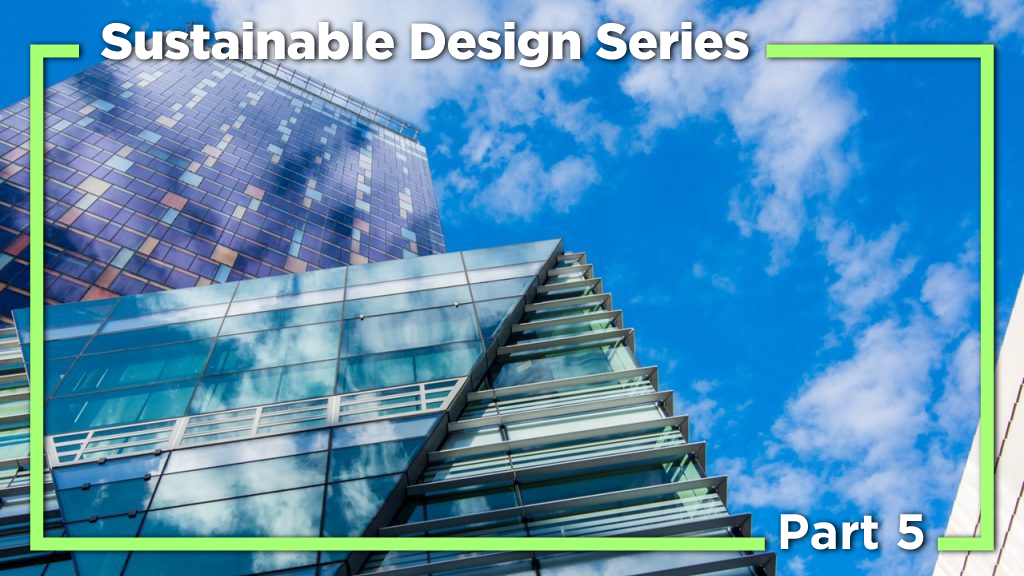The real-estate development value chain, responsible for 33 per cent of global carbon emissions, involves developers, architects, engineers, contractors, equipment suppliers, tenants, facility managers, lenders and government regulators with contradictory world views and at times a conflicting set of interests.
Notwithstanding, the very few forward-thinking developers, architects and engineers who continue to push the envelope when it comes to energy efficiency and sustainability, and pioneering end-users who insist on sustainably designed buildings, most developers’ financial models focus on the lowest design and construction cost in an effort to maximize return-on-investment.
Architects contending with tight budgets are expected to produce spectacular designs focused on showcasing the exterior and interior look and feel, leaving the design of “guts” of the building to specialist engineers. They don’t typically spend sleepless nights thinking how to maximize ventilation rates and indoor health. Indoor air can be up to 100 times more polluted than outdoor air, and nine out of 10 people worldwide breathe air that doesn’t meet the World Health Organization’s minimum health standards. Long-term energy consumption and outdoor pollution also does not figure as prominently as it should (heating and cooling buildings account for 43 per cent of global energy use).
They are naturally constrained by commercial limitations – make enough money to keep the company, and its employees, going) – and are focused on commercial aspects of their business. Critical issues, such as social responsibility and preservation of the environment, are relegated to “good-to-have” add-ons, rather than “must-have” integral parts of their designs.
Structural, mechanical and electrical engineers, whose work is typically hidden from view when the building is complete, also work with compressed budgets and schedules and don’t have the time to truly design the building to peak efficiency, tending to replicate designs they’ve done before. On the surface, choosing a “reliable” design that works may seem like a good idea. But the results have been catastrophic from an energy consumption and carbon emissions perspective, and the entire planet is paying the price.
Some engineers block new energy-saving technologies to cover-up their lack of awareness of such innovations and/or embarrassment for not having thought about those innovations themselves. Sometimes, innovations are blocked because they require a drastic redesign of the conventional “proven” design (more design man-hours), meaning lower profit margins. It is far easier to tell the less technically capable client that these technologies simply won’t work for their current project, but perhaps considered for a future project, and hope the topic is forgotten.
It is also unfortunate to add that some designers (and contractors) can be “encouraged” to favour specific equipment vendors and over-specify equipment. This encouragement takes many shapes, but it all comes down to some form of in-cash or in-kind inducement. The vendor also throws in detailed design drawings and it’s a win-win for the parties concerned, but a lose for the client and their project. In some countries, this is the standard way of doing business and those who don’t pay don’t play. In North America, while less prevalent and illegal, it is still something to contend with.
If we have to be totally honest, the current practice of designing the guts of the building (structural, electro-mechanical) is so antiquated. For example, precast concrete. Invented in 1905 in Liverpool, England, it has demonstrated speed, quality, cost and quality benefits. Yet over 100 years later it represents less than five per cent of the global construction market.
Or, AC. Willis Carrier invented the air-conditioner in 1902, but it took almost 30 years for AC to reach the U.S. White House in very hot and humid Washington, DC and another 25 years to become a more acceptable commodity product in the U.S.
With AC now over 100 years old, and with an extraordinary impact on the world, it helped open up the U.S. Southwest and made many heretofore unbearably uncomfortable parts of the world bearable. However, for a product that consumes 20 per cent of global energy (and growing) there’s plenty of room for innovation. There are technologies here today that can reduce the installed heating and AC capacity by 50 per cent, but for the reasons mentioned above, they are not yet mainstream.
There will be a transition period for new technologies to be adopted, similar to the transition from fax to email. They both transmit words almost instantaneously but one does it in a totally different and far better way. When was the last time you used your fax? Worth noting that spam faxes predated spam emails, and more annoying as they always finished the paper in the fax machine.
In order to create an environment conducive to innovation, the internal culture needs to reward adoption of new technologies and being upfront with developers about the impact of using them on their projects. This also means that developers must be willing to pay more for better designs, and designers must strive to remain up-to-date with the latest technology as a basic requirement. As a matter of fact, continuing education and regular pass/fail tests must be the standard practice for all engineering design firms.
This op-ed is the fifth in a series from Eco-Structures International’s founder and director Ghassan Nimry which focuses on innovative sustainable engineering solutions to today’s climate change problems. He believes that technology can solve many of today’s seemingly intractable problems, but to make it work we need collective work, personal acknowledgement of our role in the problem and our ability to be part of the solution. Send comments to editor@dailycommercialnews.com.











Recent Comments
comments for this post are closed